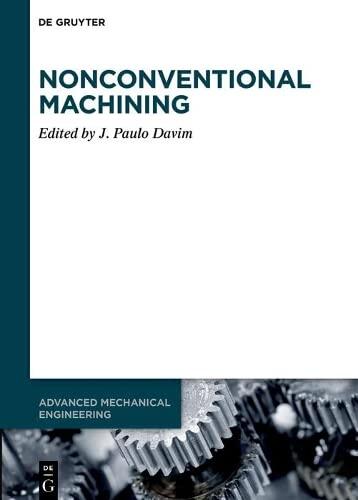
Nonconventional Machining
아직 평점이 없습니다
형식
하드커버
페이지
250
언어
영어
출판됨
Dec 5, 2022
출판사
De Gruyter
판
1
ISBN-10
3110584107
ISBN-13
9783110584103
설명
This book delves into the intricate world of nonconventional machining processes, presenting readers with a comprehensive overview of advanced techniques in mechanical engineering. The author, J. Paulo Davim, brings a wealth of knowledge and expertise, making complex subjects accessible to both students and professionals in the field. By exploring various methods that deviate from traditional machining practices, the text addresses the growing need for innovative approaches in manufacturing.
Readers will discover a wealth of information about unconventional techniques such as electrical discharge machining, laser machining, and ultrasonic machining. Each method is meticulously examined, highlighting its applications, advantages, and limitations within industry settings. The book serves as a valuable resource, featuring case studies and real-world examples that illustrate the practical implications of these nonconventional methods.
In addition to technique-specific discussions, the text also emphasizes the importance of cutting-edge technologies and their impact on efficiency and precision in manufacturing. Davim discusses the role of automation and digital tools in revolutionizing machining practices, demonstrating how these advancements contribute to improved productivity and sustainability.
Ultimately, this insightful work offers a detailed exploration of nonconventional machining, making it an essential addition to the library of anyone engaged in advanced mechanical engineering. Whether for academic pursuits or professional development, readers will find a treasure trove of information to inform their understanding and practice in this dynamic field.
Readers will discover a wealth of information about unconventional techniques such as electrical discharge machining, laser machining, and ultrasonic machining. Each method is meticulously examined, highlighting its applications, advantages, and limitations within industry settings. The book serves as a valuable resource, featuring case studies and real-world examples that illustrate the practical implications of these nonconventional methods.
In addition to technique-specific discussions, the text also emphasizes the importance of cutting-edge technologies and their impact on efficiency and precision in manufacturing. Davim discusses the role of automation and digital tools in revolutionizing machining practices, demonstrating how these advancements contribute to improved productivity and sustainability.
Ultimately, this insightful work offers a detailed exploration of nonconventional machining, making it an essential addition to the library of anyone engaged in advanced mechanical engineering. Whether for academic pursuits or professional development, readers will find a treasure trove of information to inform their understanding and practice in this dynamic field.